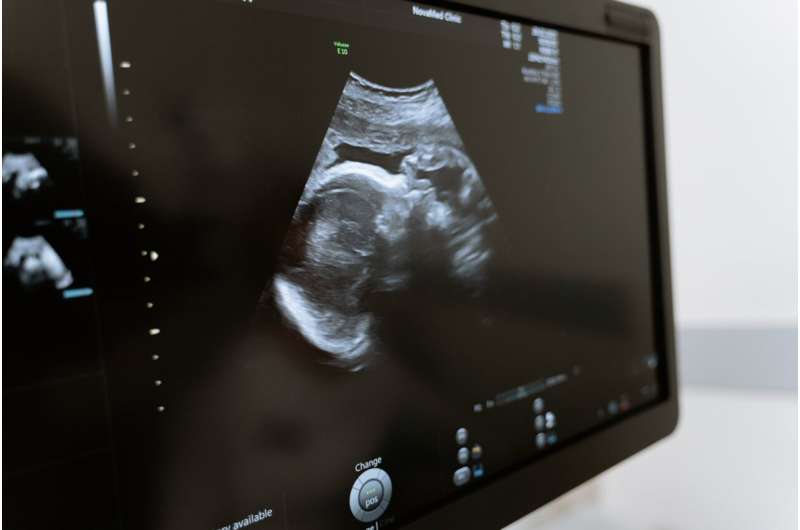This article has been reviewed according to Science X's editorial process and policies. Editors have highlighted the following attributes while ensuring the content's credibility:
fact-checked
trusted source
proofread
Ultrasound can help predict the risk of preterm births, research shows

Researchers have developed a way to use ultrasound to predict whether a pregnant person is at risk of delivering a baby prematurely, which occurs in upward of 10% of pregnancies in the U.S.
The new method—the result of more than 20 years of collaboration between researchers in nursing and engineering at University of Illinois Chicago and University of Illinois Urbana-Champaign—measures microstructural changes in a woman's cervix using quantitative ultrasound.
The ultrasound method works as early as 23 weeks into a pregnancy, according to the research, which is published in the American Journal of Obstetrics & Gynecology MFM.
The current method for assessing a woman's risk of preterm birth is based solely on whether she has previously given birth prematurely. This means there has been no way to assess risk in a first-time pregnancy.
"Today, clinicians wait for signs and symptoms of a preterm birth," such as a ruptured membrane, explained lead author Barbara McFarlin, a professor emeritus of nursing at UIC. "Our technique would be helpful in making decisions based on the tissue and not just on symptoms."
In a study of 429 women who gave birth without induction at the University of Illinois Hospital, the new method was effective at predicting the risk of preterm births during first-time pregnancies. And for women who were having a subsequent pregnancy, combing the data from quantitative ultrasound with the woman's delivery history was more effective at assessing risk than just using her history.
The new approach differs from a traditional ultrasound where a picture is produced from the data received. In quantitative ultrasound, a traditional ultrasound is performed but the radio frequency data itself is read and analyzed to determine tissue characteristics.
The study is the culmination of a research partnership that began in 2001 when McFarlin was a nursing Ph.D. student at UIC. Having previously worked as a nurse midwife and sonographer, she had noticed that there were differences in the appearance of the cervix in women who went on to deliver preterm. She was interested in quantifying this and discovered that "no one was looking at it."
She was put in touch with Bill O'Brien, a UIUC professor of electrical and computer engineering, who was studying ways to use quantitative ultrasound data in health research. Together, over the past 22 years, they established that quantitative ultrasound could detect changes in the cervix and, as McFarlin had suspected long ago, that those changes help predict the risk of preterm delivery.
The preterm birth rate hovers around 10%–15% of pregnancies, O'Brien said. "That's a very, very high percentage to not know what is happening," he said.
If a clinician could know at 23 weeks that there was a risk of preterm birth, they would likely conduct extra appointments to keep an eye on the fetus, the researchers said. But since there had previously been no routine way to assess preterm birth risk this early, there have been no studies to show what sort of interventions would be helpful in delaying labor. This study, O'Brien explains, will allow other researchers to "start studying processes by which you might be able to prevent or delay preterm birth."
More information: Barbara L. McFarlin et al, Enhanced identification of women at risk for preterm birth via quantitative ultrasound: a prospective cohort study, American Journal of Obstetrics & Gynecology MFM (2023). DOI: 10.1016/j.ajogmf.2023.101250



















